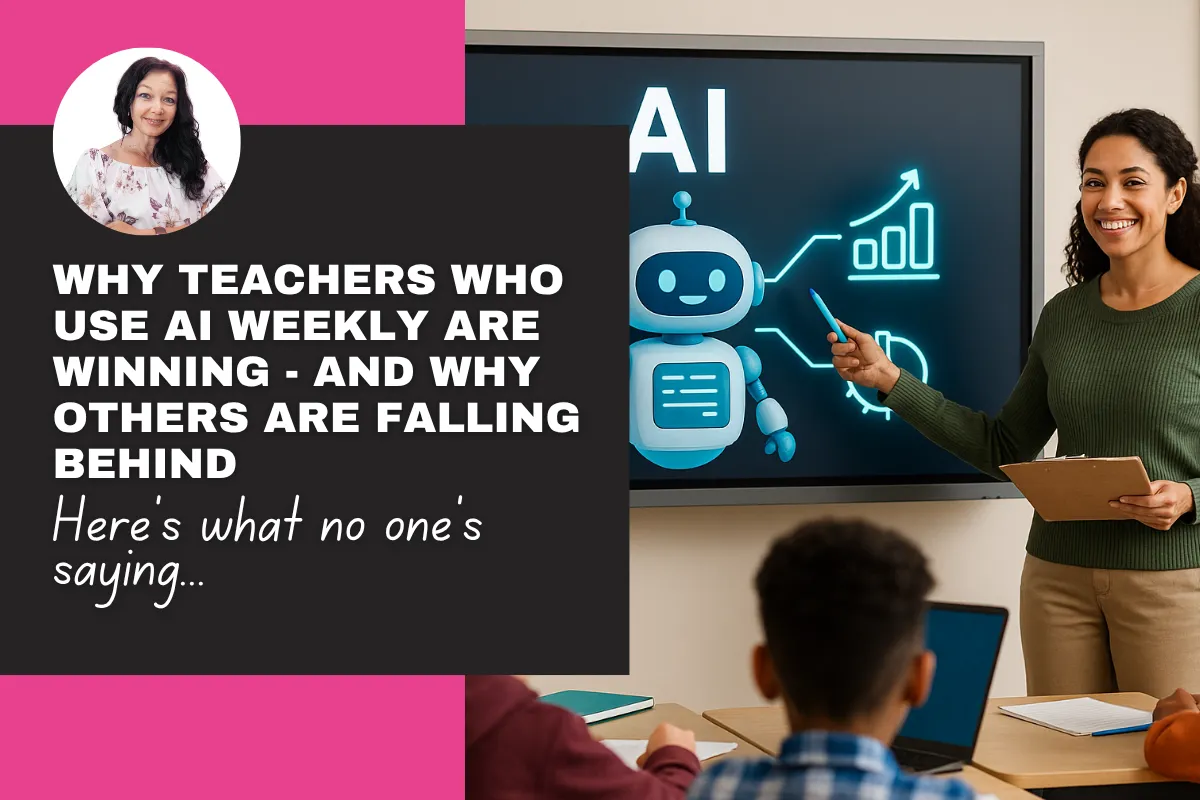
Why Teachers Who Use AI Weekly Are Winning—And Why Others Are Falling Behind
Weekly AI Isn’t Optional Anymore - It’s the Survival Skill Schools Can't Keep Ignoring.
Let’s be real for a moment. Education isn’t just evolving - it’s sprinting. AI is no longer just knocking at the classroom door. It’s sitting in the hallway, waiting for an invitation to come in and make a difference.
But here’s what’s wild: while up to 60% of students are using AI tools weekly, many teachers are still stuck on the sidelines. Why? It’s not laziness. It’s not fear of robots. It’s a tangled mix of training gaps, policy restrictions, and administrative overwhelm - and it’s costing everyone.
So let’s break down what’s really going on with AI in schools, why weekly use matters, and how to finally bridge the gap between hype and real classroom help.

The AI Adoption Surge (But It’s Uneven)
Let’s start with some eye-opening data:
75% of K–12 students in the U.S. use AI tools like ChatGPT. Nearly half do so weekly
In Australia, 78% of secondary schools have adopted AI tools, with 1 in 5 schools planning to expand even further
For teachers, adoption varies:
This shows us one thing clearly: students are sprinting into the future, while many teachers are still catching their breath.

Teachers Who Use AI Weekly Save 6 Hours (And 6 Weeks a Year)
The power of weekly AI use isn't theoretical—it's practical. Teachers who use AI consistently report saving:
5.9 to 6 hours per week on admin-heavy tasks like grading, lesson prep, resource generation, and personalized feedback
That adds up to six extra weeks of time per school year.
This “AI dividend” get's reinvested into:
One-on-one support
Student engagement
Improved parent communication
Decreased stress and burnout
This is key - it’s not just about saving time. It’s about doing better work with less chaos.
So What’s Holding Teachers Back?
If the benefits are so obvious, why isn’t weekly AI use the norm?
Because the real obstacles aren’t flashy—they’re systemic. And they stack up fast:
1. Inadequate AI Training
Teachers don’t need more shiny tools. They need time, support, and real training.
Without proper training:
They lack confidence and clarity, unsure how AI fits into their subject or pedagogy.
Many use AI inefficiently or abandon it entirely because it adds more to their plate, not less.
Ethical and privacy concerns go unaddressed, creating fear of misuse.
“Training isn’t just about learning the tool. It’s about reimagining the role of the teacher in an AI-powered world.”
2. Administrative Burdens and Red Tape
Even teachers who want to use AI often hit a brick wall:
Overloaded schedules leave no time to experiment or integrate new tools.
Blocked websites, restricted devices, and clunky approval systems slow things down.
Many face curriculum mismatches, where AI-generated content doesn’t align neatly with standard assessments.
It’s the ultimate irony: the very tools that could reduce stress are kept out of reach by the systems meant to support educators.
3. Restrictive School Policies
Policies are meant to protect. But in some cases, they prevent progress.
Schools are understandably cautious. They want to:
Protect student privacy (especially under GDPR, FERPA, COPPA).
Avoid AI misuse (deepfakes, misinformation, culturally insensitive content).
Maintain authenticity in communication and academic integrity.
These goals are valid, but when policies block access to tools like ChatGPT without offering alternatives or guidance, it creates a digital stalemate.

What Needs to Change (Now)
To move from hesitant dabbling to confident, weekly use, schools need to shift three things:
✅ Build Real AI Training into Professional Development
Not another generic PD day. We’re talking ongoing, hands-on, classroom-tested support. Teachers need:
Templates and walkthroughs
Ethical guidance and boundaries
Strategies for AI-assisted lesson planning, not AI-driven shortcuts
✅ Streamline Admin and Tech Approvals
Stop locking the doors to innovation. Schools must:
Create AI “sandboxes” where teachers can test tools
Offer fast-track approvals for vetted apps
Hire or train AI integration coaches (just like tech coaches!)
✅ Reimagine the Role of the Teacher in the Age of AI
AI isn’t a threat to teachers. It’s an amplifier of their humanity.
Weekly AI use isn’t about outsourcing thinking. It’s about:
Designing better lessons in half the time
Personalizing learning for every student
Freeing up energy for what really matters—connection, creativity, critical thinking
Final Thoughts: AI With Heart
The truth? AI won’t replace teachers.
But teachers who know how to use AI will replace those who don’t.
And that’s why weekly integration matters. Not just for efficiency. Not just for trend-chasing. But because education deserves to evolve with tools that empower—not overwhelm.
We need systems that support teachers. Policies that protect and permit. Training that informs without intimidating. And above all, we need to see AI not as the enemy—but as the sidekick every educator deserves.
Ready to Take the First Step?
Visit joynicholson.com for practical AI tools, done-for-you templates, and guides built for real families and real classrooms.
Together, let’s make AI simple, ethical, and empowering—one week at a time.
